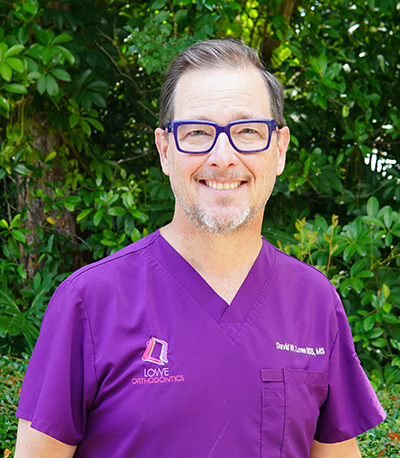Dr. David Lowe
David W. Lowe, D.D.S., M.S., P.A.
Dr. David W. Lowe received his Doctor of Dental Surgery degree, with high honors, from Northwestern University in 1994. He completed his orthodontic training and master’s thesis in 1996, also at Northwestern University.
To stay up-to-date on all the latest advancements in orthodontics, Dr. Lowe maintains active memberships with the American Association of Orthodontists, American Dental Association, American Society of Forensic Odontology, Florida Association of Orthodontists, Florida Dental Association, Daytona Beach Study Club, Volusia Dental Academy and Omicron Kappa Upsilon Dental Honor Society.
He lectures for the Daytona State College Dental Assisting Program, for local dentists and dental hygienists for orthodontic education and for various law enforcement and forensic organizations on forensic dentistry.
Dr. David Lowe was born and raised in the Daytona Beach area and is the son of W.J. Lowe, who established the practice in 1958. Dr. Lowe is married to a general dentist in Daytona Beach, Dr. Jean Chang-Lowe. They have two wonderful twins, Max and Marley. In his spare time, you can find Dr. Lowe performing at community theatres or bicycling around Central Florida!
We promise to speak candidly with you about possible treatments as well as any risks and associated costs of treatment, and how treatment can address your individual needs.

Frequently Asked Questions

The Force is strong here I see!
